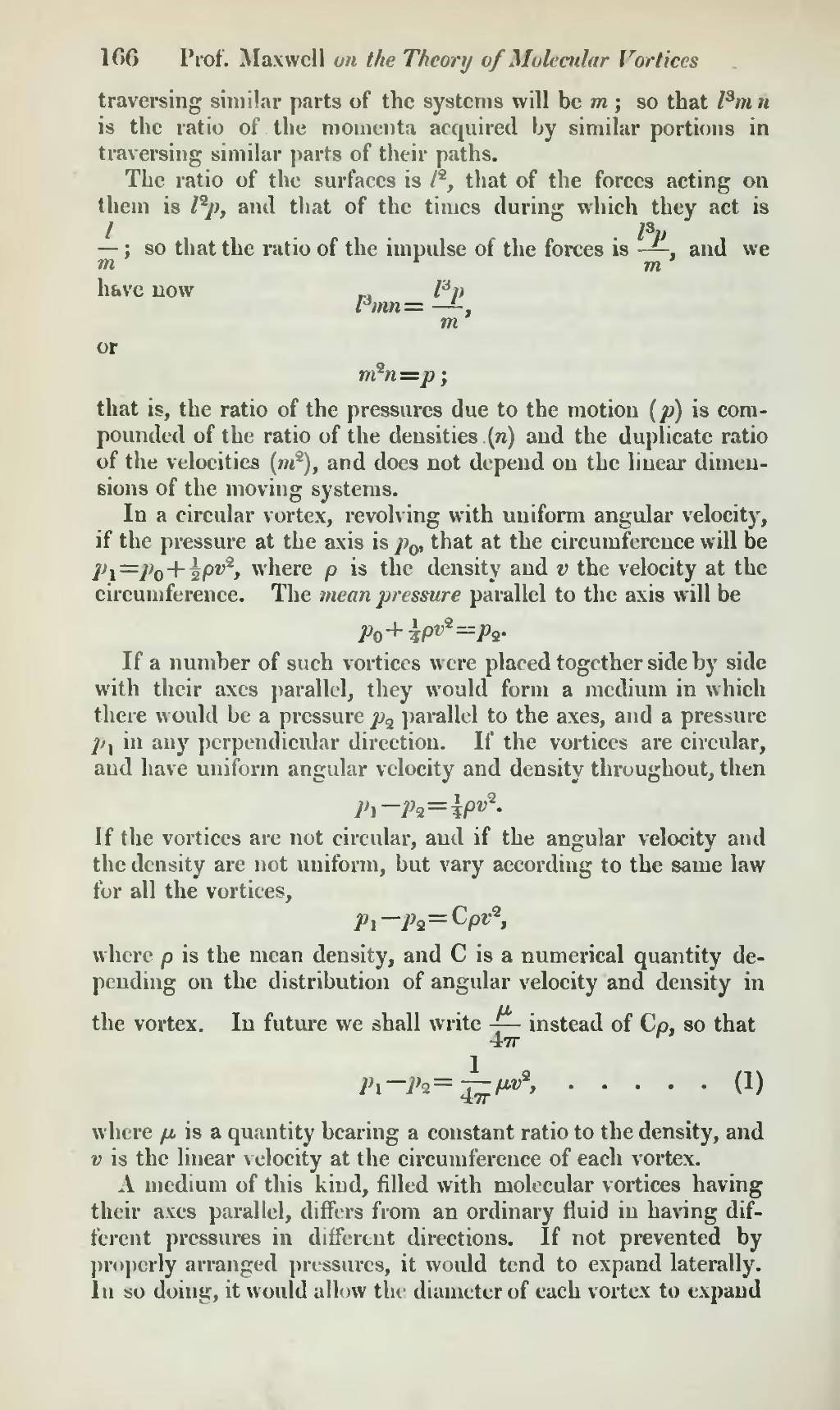traversing similar parts of the systems will be ; so that is the ratio of the momenta acquired by similar portions in traversing similar parts of their paths.
The ratio of the surfaces is , that of the forces acting on them is , and that of the times during which they act is ; so that the ratio of the impulse of the forces is , and we have now
,
or
;
that is, the ratio of the pressures due to the motion is compounded of the ratio of the densities and the duplicate ratio of the velocities , and does not depend on the linear dimensions of the moving systems.
In a circular vortex, revolving with uniform angular velocity, if the pressure at the axis is , that at the circumference will be , where is the density and the velocity at the circumference. The mean pressure parallel to the axis will be
.
If a number of such vortices were placed together side by side with their axes parallel, they would form a medium in which there would be a pressure parallel to the axes, and a pressure in any perpendicular direction. If the vortices are circular, and have uniform angular velocity and density throughout, then
.
If the vortices are not circular, and if the angular velocity and the density are not uniform, but vary according to the same law for all the vortices,
,
where is the mean density, and is a numerical quantity depending on the distribution of angular velocity and density in the vortex. In future we shall write instead of , so that
where is a quantity bearing a constant ratio to the density, and is the linear velocity at the circumference of each vortex.
A medium of this kind, filled with molecular vortices having their axes parallel, differs from an ordinary fluid in having different pressures in different directions. If not prevented by properly arranged pressures, it would tend to expand laterally. In so doing, it would allow the diameter of each vortex to expand

























